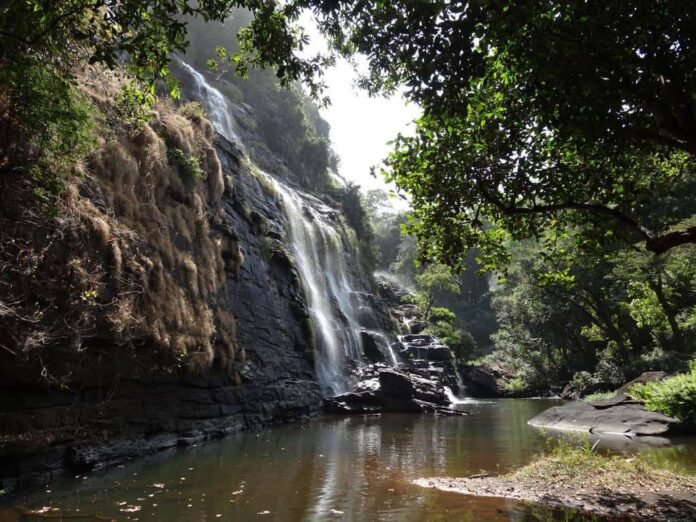Fouta Djallon Highlands is a hidden treasure waiting to be explored by adventurers and nature lovers.
This stunning destination offers a perfect blend of breathtaking landscapes, impressive waterfalls, and unique cultural experiences.
From the majestic mountains to the deep canyons and crystal-clear rivers, Fouta Djallon’s natural beauty is unrivaled. The region’s diverse landscapes provide a playground for outdoor enthusiasts, offering countless opportunities for hiking, swimming, and discovering hidden gems.
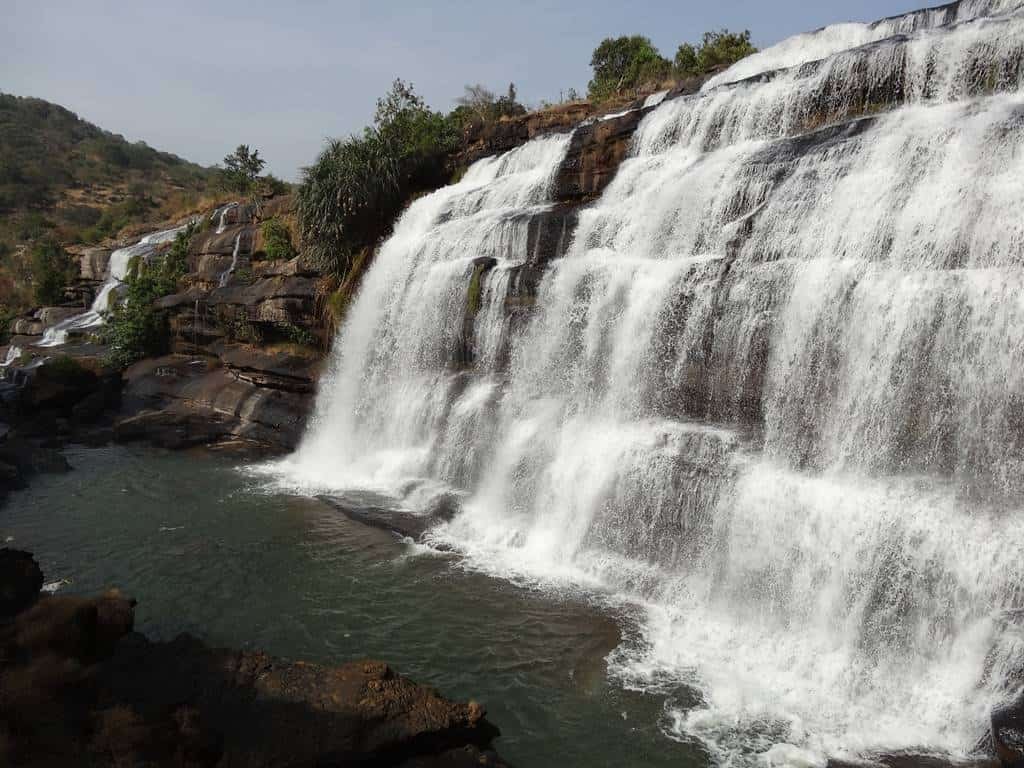
Fouta Djallon (Fula: Fuuta Jaloo, is a highland region in the center of Guinea, roughly corresponding with Middle Guinea, in West Africa. The Fulani people call the region Fuuta-Jaloo in the Pular language. ‘Futa’ is a Fula word for any region inhabited by the Fulɓe. ‘Djallon’ means ‘mountain’ in old Jallonke.
The Fouta Djallon highlands in Guinea offer a range of adventurous activities for tourists. Visitors can explore the breathtaking landscapes through hiking and trekking, visit stunning waterfalls like Chutes de Sala, and experience the unique Fulani culture in the region. It is a paradise for hikers, with trails that wind through diverse landscapes, offering stunning views and challenging climbs like Mount Loura.
You are welcome to explore the numerous waterfalls, including Chutes de Sala and Chutes de Ditinn, which are great for swimming and enjoying the scenery. Immerse yourself in the Fulani culture by visiting local villages and interacting with the inhabitants.
Fouta Djallon, mountainous region of west-central Guinea. Consisting of a series of stepped sandstone plateaus with many picturesque trenches and gorges, the region serves as the watershed for some of western Africa’s greatest rivers. The Fouta Djallon covers an area of 30,000 square miles (77,000 square km) and averages 3,000 feet (914 metres) in elevation. Mount Loura (Tamgué), its highest point (5,046 feet [1,538 metres]), rises near the town of Mali. Originating in the Fouta Djallon’s central plateau are the headwaters of the Gambia, Bafing (Sénégal), Koliba, Kolenté (Great Scarcies), Kaba (Little Scarcies), and Konkouré rivers. The Fouta’s eastern slopes feed various tributaries of the Niger River; and its extension to the extreme southeast, known as the Guinea Highlands, contains the Niger’s source.
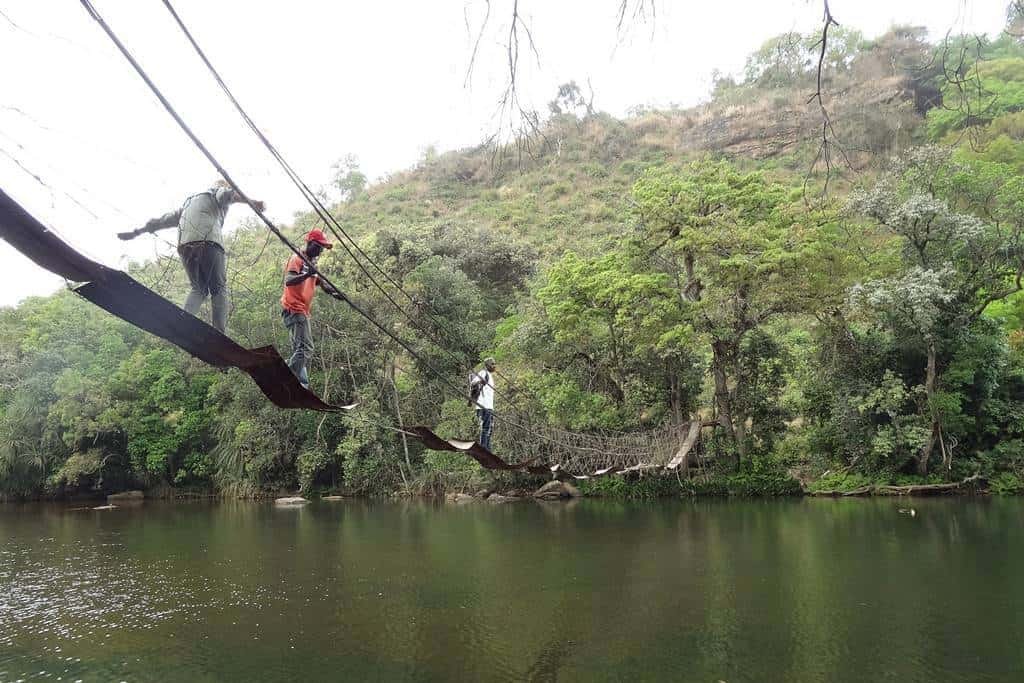
Fouta Djallon highlands offers a variety of fun and engaging activities, especially for those who enjoy nature and outdoor adventures. It’s known for its stunning landscapes, including rolling hills, cascading waterfalls, and impressive canyons. Popular activities include hiking, exploring waterfalls like Tinkisso Falls, and discovering unique flora and fauna. The region also provides opportunities to experience the rich culture and traditions of the Fulani people, who have inhabited the area for centuries.
Fouta Djallon has a pleasant climate and an array of majestic landscapes that captivate nature lovers. The region has several waterfalls, each with unique charm and beauty.
From the mighty Ditinn waterfalls near Dalaba to the multi-tiered Kambadaga Falls, visitors are treated to a visual spectacle that leaves them in awe.
In addition to the waterfalls, Fouta Djallon is home to impressive canyons, natural swimming pools, and striking rocky formations. The granite cliffs and lush forests create a picturesque backdrop for outdoor adventures, making it an essential destination for any West African itinerary.
Some History behind the Fouta Djallon Highlands
The Fouta Djallon highlands in Guinea (West Africa) have a rich history, notably as the site of the Imamate of Futa Jallon, a Fulani Islamic theocratic state established in the 18th century. This region, characterized by its mountainous terrain and strategic location at the headwaters of major West African rivers, played a significant role in the spread of Islam and the political landscape of the region.
The Fouta Djallon’s name comes from its early Dialonke (Djallonke) inhabitants. The region was first organized as a separate political entity as a result of the Fulbe and Malinke jihad (Muslim holy war) led by Karamoko Alfa and Ibrahima Sori in the late 1720s. As a Muslim theocratic state, Fouta Djallon dominated both central and coastal Guinea until it became part of the French colony of Guinea. Timbo, 26 miles (42 km) northeast of Mamou, was the seat of the Fulani emirs until its occupation by French troops in 1896. Modern Fouta Djallon is mainly inhabited by Muslim Fulani peoples who herd tsetse-resistant Ndama cattle. The town of Labé is the chief trade centre.
The Jallonke people were the earliest inhabitants of the Futa Djallon. The region was a province of both the Sosso Empire and Mali Empire under the name ‘Dialonkadugu’, meaning ‘home of the mountain people’.
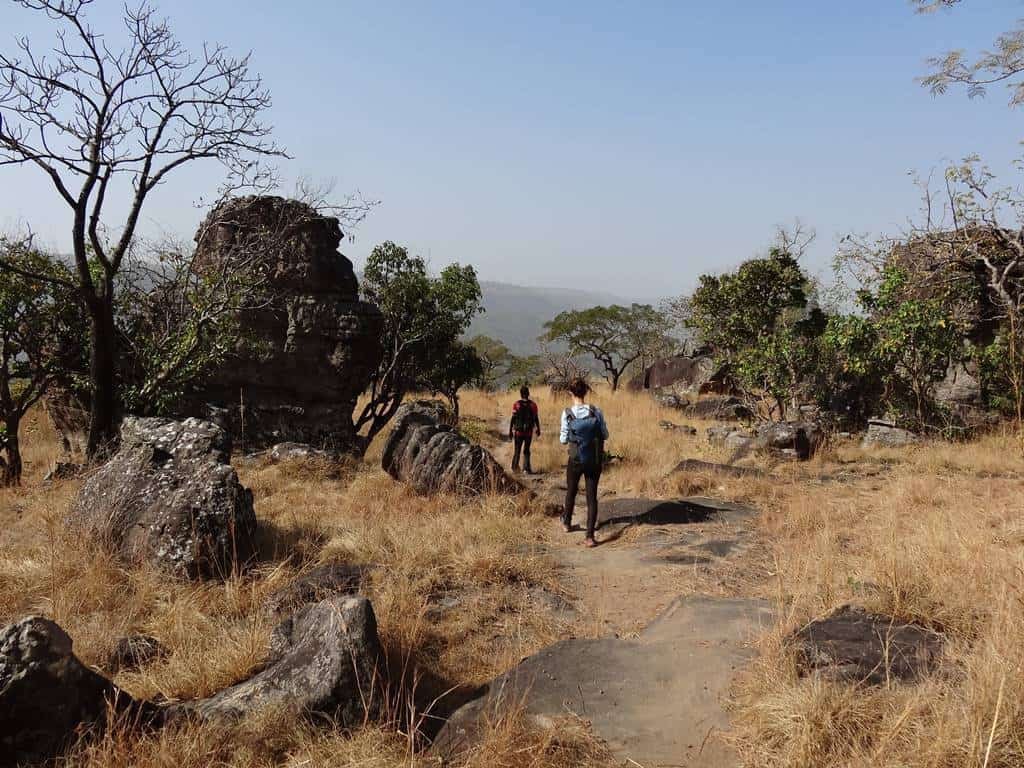
Since the 17th century, the Fouta Djallon region has been a stronghold of Islam. Early revolutionaries led by Karamokho Alfa and Ibrahim Sori set up a federation divided into nine provinces. Several succession crises weakened the central power located in Timbo until 1896, when the last Almamy, Bubakar Biro, was defeated by the French army in the Battle of Porédaka.
The Fulɓe of Fouta Djallon spearheaded the expansion of Islam in the region. Fulɓe Muslim scholars developed indigenous literature using the Arabic alphabet. Known as Ajamiyya, this literary achievement is represented by such great poet-theologians as Tierno Muhammadu Samba Mombeya [fr], Tierno Saadu Dalen, Tierno Aliou Boubha Ndyan, Tierno Jaawo Pellel etc. In its heyday, it was said that Fuuta-Jaloo was a magnet of learning, attracting students from Kankan to the Gambia, and featuring Jakhanke clerics at Tuba as well as Fulɓe teachers. It acted as the nerve centre for trading caravans heading in every direction. The more enterprising commercial lineages, of whatever ethnic origin, established colonies in the Futanke hills and along the principal routes. It served their interests to send their sons to Futanke schools, to support the graduates who came out to teach, and in general to extend the vast pattern of influence that radiated from Futa Jalon.
Amadou Hampâté Bâ has called Fuuta-Jaloo “the Tibet of West Africa” in homage to the spiritual and mystic (Sufi) tradition of its clerics.
Fouta Djallon is a natural wonder and a cultural treasure trove. The region is inhabited by the Fula people, also known as Peul, Fulani, or Foulbe, traditionally nomadic cattle herders.
Learning a few basic phrases in the local language, Pulaar, can help facilitate meaningful interactions with villagers, who may not speak French.
From enjoying traditional meals to participating in cultural activities, such as music and dance, Fouta Djallon offers an immersive experience that leaves a lasting impact on those who venture into its heart.
Fouta Djallon is home to numerous stunning waterfalls that serve as the region’s crown jewels. Some of the most notable include:
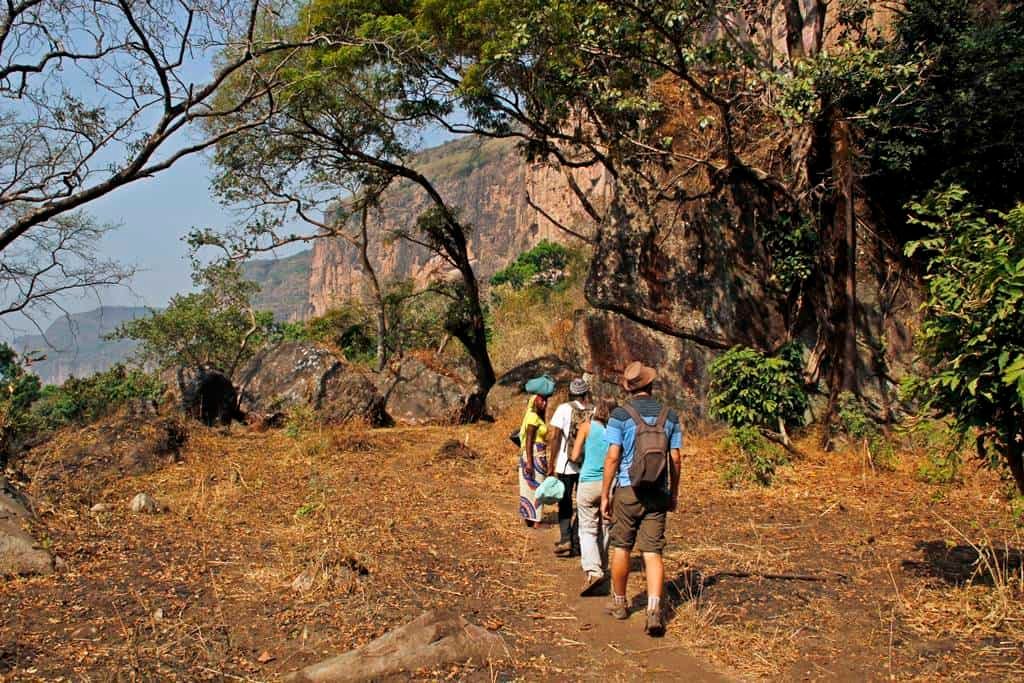
Ditinn Waterfalls: Located near Dalaba, these majestic falls are a sight to behold, especially during the rainy season when the water flow is at its peak.
Kambadaga Falls: This series of waterfalls and canyons offer a breathtaking display of nature’s power and beauty. The paths to reach Kambadaga can be challenging.
Kinkon Falls: Situated near Pita, these falls provide a picturesque setting for a refreshing dip in the natural pools at their base.
Saala Falls: In the vicinity of Labe, Saala Falls is another must-see destination for waterfall enthusiasts and nature lovers.
In addition to these well-known waterfalls, countless smaller cascades and hidden gems are waiting to be discovered by adventurous hikers throughout the region.
Tips for Travelers
When planning a trip to Fouta Djallon, there are a few key points to keep in mind:
Entry Points and Accommodations: Travelers can enter Fouta Djallon from Mamou or Koundara, with Labe serving as a convenient starting point. Hotel Tata in Labe offers comfortable accommodations with solar power and Italian pizza.
Navigating the Terrain: The rugged tracks of Fouta Djallon can be challenging to navigate, so it’s essential to be prepared for an adventure. Hiring a local guide or joining a reputable tour operator can help ensure a safe and enjoyable experience.
Respect for the Environment: As with any natural destination, it’s crucial to explore with caution and respect for the environment. Visitors should be mindful of their impact and follow the “Leave No Trace” principles.
Fouta Djallon is a remarkable destination that combines stunning natural beauty with rich cultural experiences.
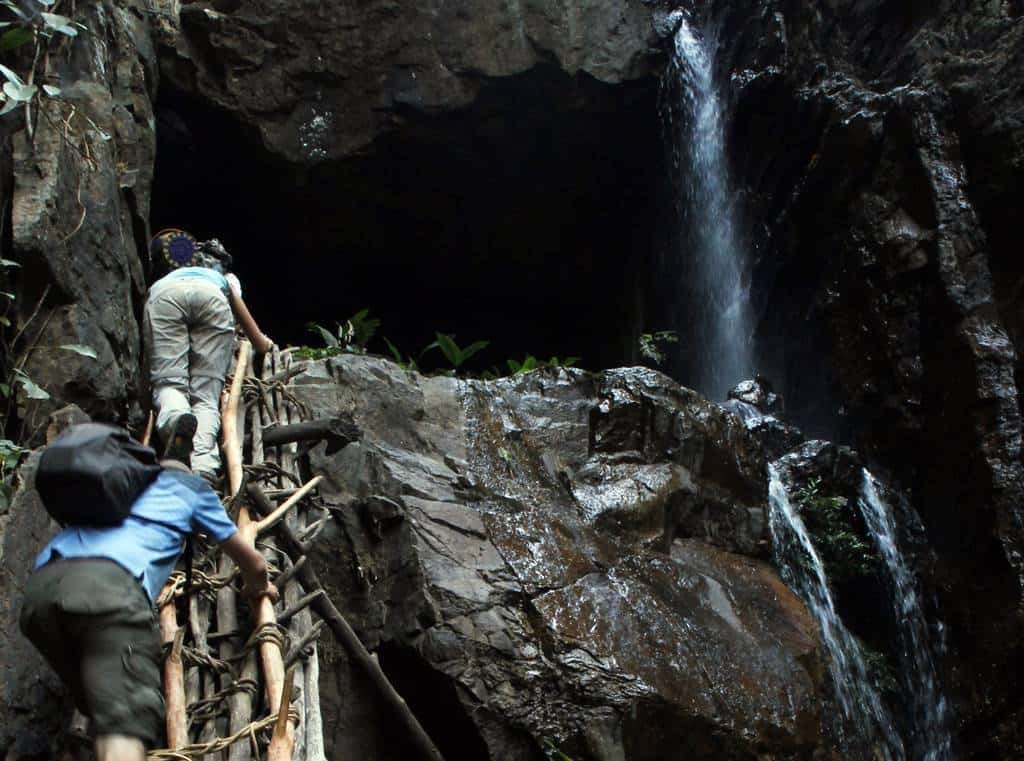
From the challenging hikes through diverse landscapes to the refreshing swims in crystal-clear waterfalls, this region in Guinea Conakry offers an array of activities for adventurers and nature enthusiasts.
The stunning natural beauty, combined with the rich cultural heritage, makes Fouta Djallon a must-visit for anyone seeking an off-the-beaten-path adventure in West Africa.
Stay tuned to the Global African Times website www.globalafricantimes.com for more African Travel Destinations.


